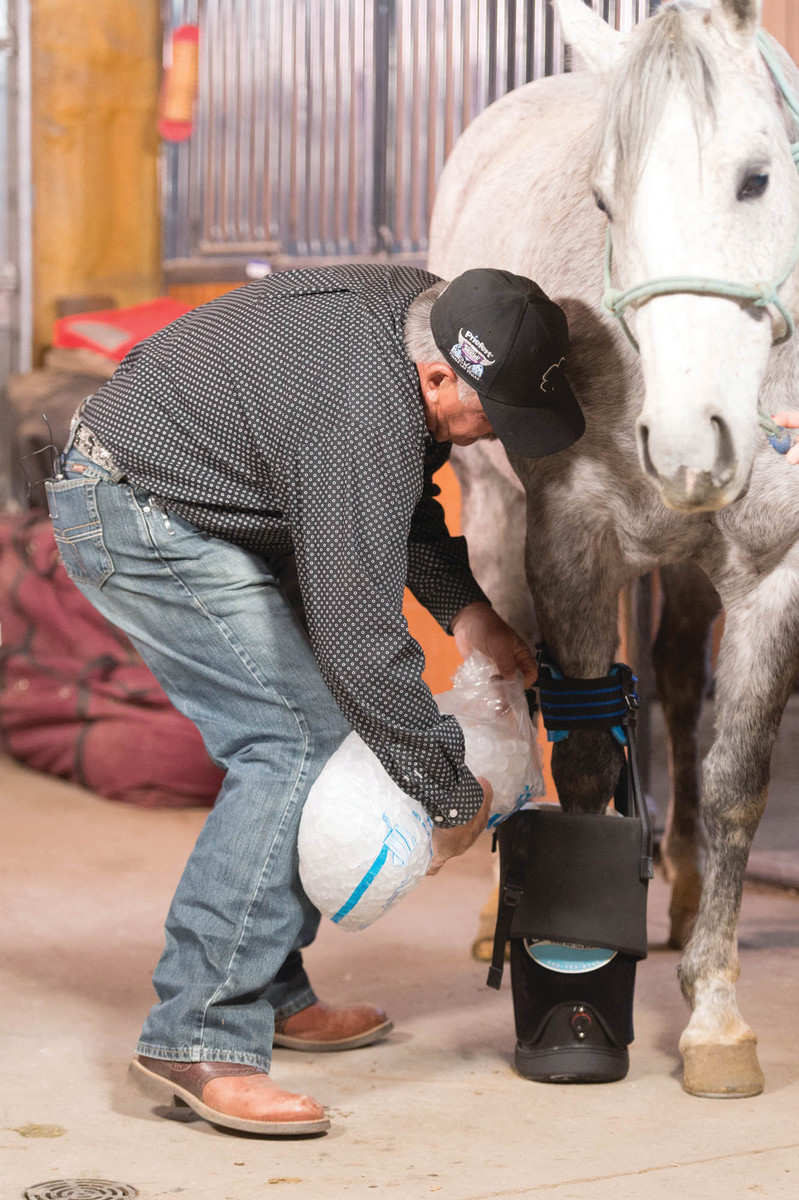Soft Ride Ice Spas might just be the answer to your horse’s lameness or poor performance issues.
With all the money on the line in team roping and the price of a horse to get you to the pay window, taking care of that horse has become more critical than ever. More and more, horses—who, in nature, regularly move across soft pastures—are expected to stand tied on hard concrete in parking lots and in fairgrounds en route to these high-dollar pursuits. The unnatural environments in which we now put our horses jeopardizes their soundness, so we’ve got to look for ways to bring them back to their natural comfort while treating them like the high-caliber athletes they are. It’s as simple as this: the longer you can keep your equine athlete sound, the easier it is to keep your team roping account in the black. And the time-tested, most-effective method for maximizing soundness is icing.
Who is Icing?
Top athletes—from LeBron James to Serena Williams to Tom Brady—ice their bodies with cold water and slurries of ice before and after performance. With access to all the hyperbaric chambers and high-tech therapies in the world, superior performers continuously choose ice as a pre-and post-workout and performance treatment. When you can’t afford to bench your best horse—be it for a last-chance World Series of Team Roping qualifier or a short-round steer at Pendleton—icing is your best bet for faster recovery.

Why Icing nYour Horse Matters?
Icing is a cheap, effective, natural method for taking the edge off pain and decreasing inflammation, which in turn speeds your horse’s recovery. Cold therapy will decrease edema in an injured or inflamed area, minimizing the damage to the tissue. Icing your horse’s legs at night after a roping will help get them ready to perform the next day.
Getting Deep
Icing in Soft Ride Ice Spas adds another element to this increased recovery through its channeled gel orthotics. The channels allow the cold water to flow underthe hoof, cooling the sole of the horse’s foot, which in turn pumps the horse’s blood even farther up the leg than the boots reach. But even more so, the deep gel orthotic promotes the horse’s natural ability to load and unload weight from the foot. That loading and unloading—meaning the shift of weight from one side to the other–is what keeps blood flowing tothe foot and pumping back up the leg, which in turn promotes a healthier, more dynamic foot. No foot, no horse, right?!
Two Ways Icing Legs Helps Horses
The ice slurry in a Soft Ride Ice Spa cools the leg, reducing inflammation, while the deep gel orthotic helps the horse pump its blood back up through its body to increase circulation and speed recovery. It’s a unique approach—one that pays off in dividends when it comes to helping equine athletes perform at the top of their game.
Circulation
Soft Ride Ice Spas have an air-hose that can be hooked to an airpump to circulate the water through the boot for an added soothing spa treatment. Moving water cools even faster than stagnant water, making the boots even more effective. Soft Ride Ice Spas can be hooked to any small air pump, and also offers a portable, continuous-use pump.

Simple and Sanitary
For years, competitors soaked their horses’ feet in buckets to ice their legs. Buckets tumbled, horses sat back on their ties, and wrecks ensued. The Soft Ride Ice Spa safely secures to a horse’s leg, and is easy to clean for use on multiple horses, unlike large public salt-water spas commonly offered by larger facilities.
Soft Ride Ice Spas are only available through your veterinarian or direct from softrideboots.com, and they ship worldwide from Houston, Texas. Follow The Team Roping Journal on Facebook and Instagram to see the boots in action all year long on the best horses in the business.
Pro Tip for Soft Ride Ice Spas:
Always ice with a slurry of ice—that means using a quart of water in the Soft Ride Ice Spa first, then pouring the ice inside. Water is thethermal conductor of the ice, transferring the cold to the bone and ligaments.










